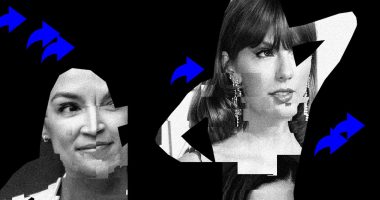

People covering their faces with masks. Cities opening makeshift hospitals. Society thrown into upheaval by a mysterious new virus.
These scenes sound like the Covid-19 pandemic, but they’re also the same ones that played out during the 1918 flu—a much deadlier outbreak that attacked even the young and healthy, ultimately claiming more than 50 million lives (675,000 of them in the US). Though very different pandemics, set against wildly different backdrops, the images they’ve spawned often look eerily alike.
“They’re strikingly similar,” says Alex Navarro, assistant director at University of Michigan’s Center for the History of Medicine, “which is interesting, considering we’re talking about a pandemic that was over a hundred years ago.”
Sometimes called the “Spanish flu,” the 1918 pandemic was a product of the First World War. According to a leading hypothesis, young military recruits from the Kansas town of Haskell—where the disease was first reported that March—spread the H1N1 virus to Camp Funston, a 56,000-soldier training facility at Fort Riley, then on across the globe. With nearly a third of physicians deployed overseas, medical staff in the States were overwhelmed and under-equipped. They had no intensive care units, ventilators, drugs, or even basic knowledge about the disease.
“They did not understand that influenza was caused by a virus, or that you could have a novel strain of a virus that no one had immunity to, and that colored the public health response in a lot of ways,” Navarro says. “Initially you had city officials saying this will just be like the regular flu.”
Covid-19 has also had deniers at the highest levels of government. At least this time, scientists were able to sequence the viral genome within weeks of SARS-CoV-2’s emergence in central China in December. That information was quickly used to design treatments now undergoing trials. “We will, with luck and time, be getting an effective vaccine,” Navarro says.
That said, a pandemic is a pandemic. The basic plot line—novel virus with no immediate solution rapidly jumps continents and claims lives—is the same. And the storyboard looks similar.
“They both share certain key, iconographic tropes,” says Erin Barnett, an expert in historic imagery and director of exhibitions at the International Center of Photography. “The masks, the stretchers, the hospitals organized in a specific way—it’s just unavoidable.”
Especially when society is unprepared. In 1918, cities across the country scrambled to create enough hospital space, building makeshift facilities or reopening previously abandoned ones. Today, the Army Corps of Engineers is also converting stadiums, convention centers, and other public spaces into giant wards cross-hatched with beds nearly identical to those a century before (as well as homeless shelters).
Similarly, amid a shortage of masks in 1918, photographers captured volunteers sewing homemade ones, which echoes contemporary imagery. “That’s heartening in terms of the ‘we’re in this together’ volunteerism that abides today,” Navarro says, “but it’s also a bit frightening that 100 years later we still rely on volunteers to get basic personal protective equipment.”
Of course, there are differences between photographs then and now—a big one being social distancing. Sure, cities in 1918 passed laws requiring masks; many nonessential businesses closed; and at least one public health commissioner ordered citizens to stand six feet apart. Yet images from the time depict people posing in shockingly cozy groups. While there are plenty of pictures of bad social distancing today, many more photographers are documenting social isolation, capturing deserted streets or neighbors through their windows. “The images feel so much starker now,” Barnett says.
On the bright side, the lockdowns seem to be helping. And as much as being stuck at home sucks, at least today folks can binge on Netflix, rewatch classic sports games, and Zoom with friends and family—all in their PJs.
WIRED is providing free access to stories about public health and how to protect yourself during the coronavirus pandemic. Sign up for our Coronavirus Update newsletter for the latest updates, and subscribe to support our journalism.
More From WIRED on Covid-19








